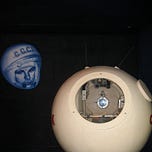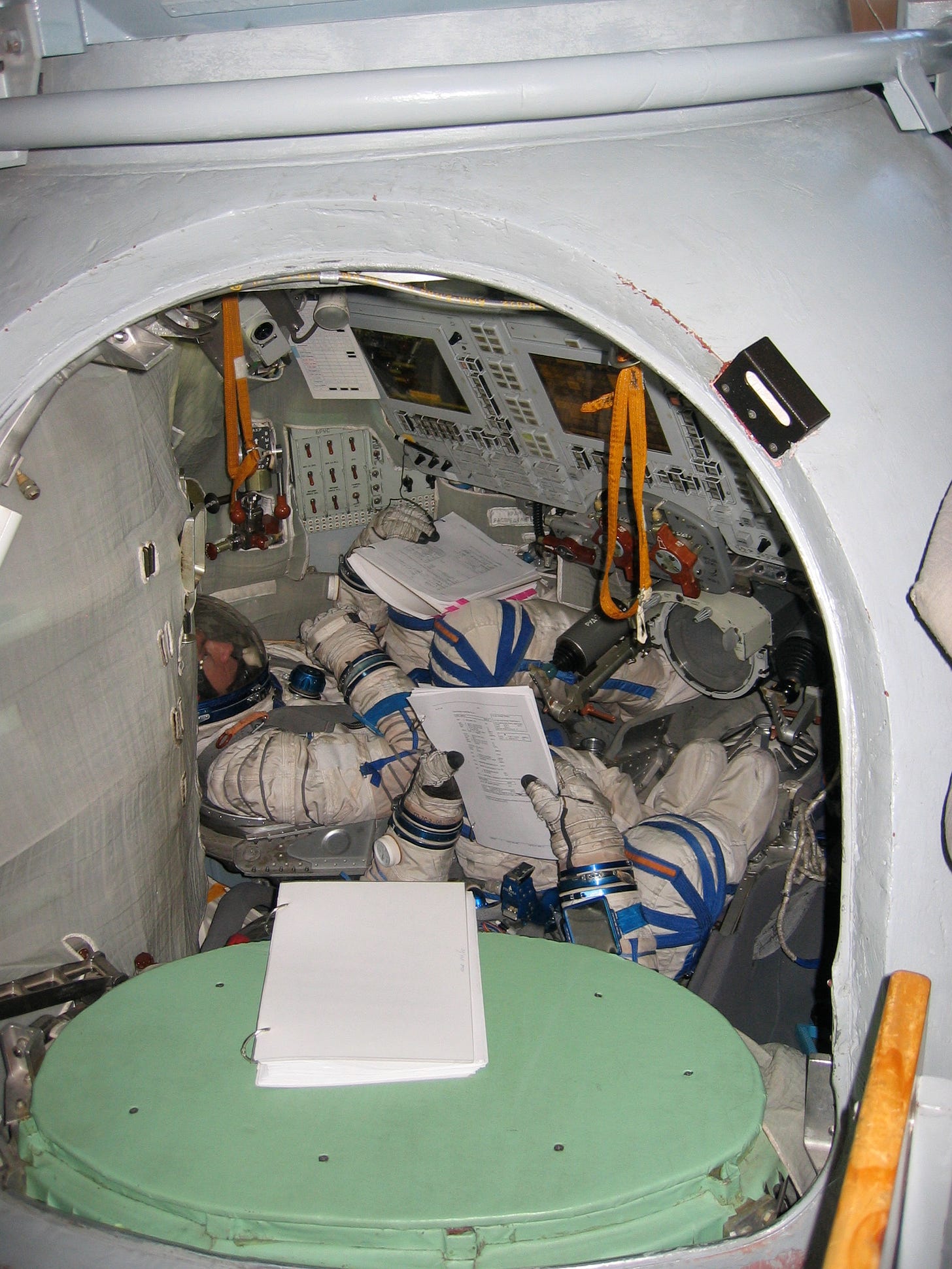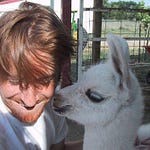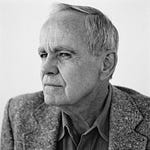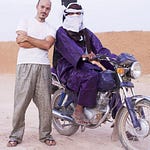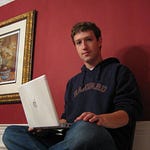Originally appeared in WIRED magazine, October 25th, 2008
Do you want to be the commander or the engineer?
It’s exactly the kind of question you’d expect to hear from Richard Garriott, the 47-year-old father of massively multiplayer online gaming. His titles, which have sold more than 100 million copies, let gamers assume the role of magician, warrior, or sci-fi super-soldier. In real life, Garriott goes by the nickname Lord British and dresses up in Elizabethan garb.
But on this May 2008 afternoon in a cramped classroom northeast of Moscow, Garriott is not playing a game. He’s fiddling with a joystick, but he’s training for a real-life mission as a cosmonaut. In front of him is a simulation of the control panel of the Soyuz spaceship. “I know you are great computer gamer, so here you go,” his instructor jokes in a thick Russian accent as he fires up the videoscreen so Garriott can practice a descent.
Welcome to Star City, Russia, the tiny town where cosmonauts have trained since the 1960s. Today, clients of Space Adventures should expect to spend about eight months here (after forking over millions of dollars) to learn the ropes before blastoff.
When the Soyuz TMA-13 spacecraft blasts off from Kazakhstan on October 12 and travels to the International Space Station, Garriott will be on board. The Soyuz can accommodate three people. US astronaut Mike Fincke will sit in the left seat, and mission commander Yuri Lonchakov will occupy the center seat. Garriott didn’t have the right stuff, but he did buy the right seat.
Garriott will become the sixth private citizen to join the most exclusive, most high-octane clique on the planet: Call it the 240-mile-high club. Membership includes Greg Olsen, who made his fortune developing infrared cameras; Mark Shuttleworth, the software engineer who spearheaded Ubuntu; and Charles Simonyi, former chief architect of Microsoft. What they have in common, other than tremendous success in the tech industry, is a willingness to pay tens of millions of dollars for a week and a half in space.
But here’s the fine print: That ticket to the ISS comes with a stopover. Before they blast off, the wealthy adventurers must spend as many as eight months at Russia’s cosmonaut training ground, Zvyozdny Gorodok, aka Star City. They live in cramped dormitories in the Prophylactory Building, or Prophy, which looks more YMCA than Star Trek. They slip and slide down frozen walkways past dilapidated Soviet structures. They subsist on cafeteria food slathered in mayo. They bury themselves in textbooks or ride “vomit comets” and centrifuges.
“Everybody knows you can go to space if you are a perfect physical specimen and incredibly smart,” Simonyi says. “But what if you are kind of normal?”
Then you have to fork over $30 million to Space Adventures, a company that serves as go-between with the Russian space program. Just don’t call its clients space tourists. “That term implies you are there to take photos and hang out,” Garriott says. “I’m trying to prove you can actually be a valuable contributor to the activities on board the space station.” He notes that he’ll be conducting research on protein crystal growth on behalf of a biotech firm. But he doesn’t deny that he’s really going up because it will be a friggin’ blast. “I’d be misleading you if I didn’t admit that it’s a very selfish activity,” he says.
Selfish, and potentially risky for the rest of the crew. “There are a million ways I can screw up and kill everyone,” Garriott says. That’s why he’s getting remedial cosmonaut training. Today’s descent simulation is uneventful at first. But then the instructor ups the ante with a malfunction, and Garriott’s capsule veers off target. “I don’t want to kill us!” Garriott yelps, flicking his mouse. “No way, dude!”
Too late. The descent simulation ends. The instructor checks the results. “Your landing is very bad,” he says gravely. Luckily, here in Star City they can restart and try again.
Zvyozdny Gorodok is the birthplace of spaceflight. Ever since the Soviets built the cosmonaut training center in 1960, this city of 8,000 has been shrouded in mystery, even left off maps. After Yuri Gagarin trained here and became the first person to travel into space, Star City became a sort of Bolshevik Oz in the minds of the Russian people, with highly evolved star men living in gleaming silver towers.
The reality, Garriott discovers as he checks in at the security booth on his first day of training in January, is a bit different. Nearby, an old woman sells chocolate and cigarettes from a tiny kiosk. Garriott makes his way past the solemn armed guards at the gate and follows a trail through the towering pines. Grim cement buildings covered in peeling paint rise from the cracked pavement. An enormous babushka trudges past, lugging a grocery sack.
Tributes to Gagarin are everywhere. There are paintings of him, like religious icons, in all the buildings. There are statues and busts of him outside the Yuri A. Gagarin Russian State Science Research Cosmonaut Training Center. There’s a bizarre futurist sculpture of him flying through a symbolic ring in front of the so-called Cosmonaut’s House. The building houses a museum, but it’s also the site of a flea market, where locals haggle over G-strings and furry hats.
Garriott arrives at his new quarters, a drafty little apartment on the third floor of the Prophy. He tacks up inspirational pictures of Gagarin, as well as posters of some of his videogames. On the door, he has put up a picture of himself and penciled Richard Garriott lives here underneath it.
“It’s like going to a monastery,” says Simonyi, who stayed here from September 2006 to March 2007. “You have a small bag and a toilet kit and move into a dorm. You have to live very simply.”
“The whole lifestyle of Star City was very different from what I was used to,” says Space Adventures’ fourth orbital client, Anousheh Ansari, a 42-year-old US-based Iranian woman and a sponsor of the Ansari X Prize (a $10 million competition to develop a reusable manned spaceship). “You can’t count on hot water. A lot of time, the water that comes out is dark brown and starts lightening up only after 20 minutes. I’m lactose intolerant and need a special diet. But over there, I had to learn to live with what was available.”
Garriott thought ahead and packed a stockpile of gamer meals: candy bars and Kraft Macaroni & Cheese. He lined up his rations on a shelf when he arrived, then sat on the edge of his bed. Gone were his personal assistant, his 6,000-square-foot mansion, his sprawling 13-acre lawn, and his private observatory. But he was as giddy as a kid on his first day of college.
“I grew up in a place like this, where everyone I knew went to space,” Garriott tells me over a lunch of veal and cabbage at a dreary Star City cafeteria. The place he’s talking about is Nassau Bay, a Houston suburb favored by NASA employees because of its proximity to the Johnson Space Center. His father, Owen Garriott, rocketed to Skylab in 1973 and to Spacelab-1 in 1983. “I always assumed that my future would include going into space,” he says.
But there was a problem: His vision sucked. When Garriott was a preteen, his family doctor at NASA showed him the results of his eye test. “I’m so sorry, Richard,” he said. “You’ll never be accepted as an astronaut.”
“It was just kind of a shock,” Garriott says, sawing away at his glistening pile of meat. “But I went from shock to dismay to ‘Who is he to tell me what I can’t do?'”
Young Garriott spent his days monkeying around with electronics and his nights playing Dungeons & Dragons. He turned his love of role-playing games into a career, coding the Ultima franchise and cofounding the development studio Origin Systems. In 1992, Electronic Arts bought Origin for $35 million in stock, making Garriott a very wealthy geek. He spent some of that on a mansion he dubbed Britannia Manor, outfitted with secret passageways.
Garriott may have made his riches designing adventures for others, but he has also orchestrated plenty of adventure for himself. A symbol representing his motto, “Ethical hedonism,” is tattooed on one of his ankles along with a ring of additional tattoos, each marking a memorable experience—like diving to the Titanic or hunting for meteorites in Antarctica. But those terrestrial exploits weren’t enough for Lord British.
So in the late ’90s, Garriott became a donor to and board member of the X Prize Foundation, the organization created by Peter Diamandis to foster private space initiatives. He also invested in Diamandis’ parabolic flight company, Zero-G, and became an investor and board member of Space Adventures, a company that had just been founded as a kind of space travel agency.
In 1998, Eric Anderson, president and cofounder of Space Adventures, pitched NASA and the Russians on the idea of selling a seat aboard a spacecraft. NASA balked, but the cash-starved Russians were game. Though Star City had been top secret until the end of the Cold War, it was now opening up in a bid for tourism money. The Russians told Anderson they needed funding for a study on the feasibility of selling a ride on the Soyuz.
Garriott, flush with wealth from the sale of Origin, says he gave hundreds of thousands of dollars to finance the research. Around the year 2000, the Russians came back with an answer: Space Adventures could purchase a seat in the capsule … for $20 million.
Garriott didn’t flinch. He signed up, figuring he was first in line. His trip was set for April 2001.
Then the dotcom bubble burst, taking most of Garriott’s cash with it. In his place went US investor Dennis Tito, who would go down in history as the first citizen space explorer. “It was devastating,” Garriott says. Four more multimillionaire cosmonauts and six years later, Garriott finally scraped together the dough for the trip, which now costs $30 million. “I’m spending the majority of my money to do this,” he says.
When he arrived at Star City on January 20, 2008, Garriott found a comrade: Aussie-born playboy Nik Halik, a 39-year-old fellow millionaire who made his money in real estate and stocks. Halik now travels the world as a motivational speaker and self-described “thrillionaire.”
Halik told Garriott of his childhood spent indoors with chronic asthma. While other kids played outside, he would sit in bed thumbing through Encyclopaedia Britannica and compiling a list of the 10 things he wanted to do before he died. By the time he got to Star City, he had crossed off the bulk of his list: mansions in Mykonos and Morocco—check. Chasing tornadoes—check. Lunch in a submersible on the Titanic—check. A night in the sarcophagus of the King’s Chamber in the Great Pyramid of Giza—not on his list, but bloody wicked. “I’ve got three more to go: the space station, Everest, and the lunar surface,” he says. “After that, I’m done.”
Technically, Halik isn’t signed up to fly until at least April 2009, but he coughed up an extra $3 million to come here early … just in case. Garriott points at Halik and jokes, “I’m the one going to space, unless this guy breaks my legs.” Halik grins broadly.
Though Space Adventure clients pay a fortune for their trip, there’s no guarantee they’ll actually make it. The slightest ailment could scuttle their plans. In 2004, an x-ray turned up a spot on Olsen’s lung, and the infrared-camera developer had to wait a year for clearance to fly. The 37-year-old Japanese dotcom millionaire Daisuke Enomoto suffered a worse fate. Just a month before his 2006 liftoff, he was diagnosed with a kidney stone. Ansari took his place. Enomoto has yet to make his flight.
Garriott had a close call of his own. Just before departing for Russia, doctors found a hemangioma on his liver. Though the small, benign lesion could have been with him his whole life and never caused a problem, there was a slim chance it could rupture and bleed in space. Garriott underwent surgery to have it removed. He shows me the 6-inch scar on his belly.
All winter, the two wealthy adventurers carefully navigate the icy sidewalks, knowing that a minor injury could ground them. In the cafeteria, they usually eat alone. When they pass cosmonauts, all they get is a grunt and nod of acknowledgment.
It’s not hard to imagine why they’re having trouble fitting in: Though the months of preparation seem daunting to Garriott and Halik, a cosmonaut spends several years training for a flight. And the outsiders’ eccentricities haven’t exactly endeared them to the locals. Garriott wears two rattails, which he’s been cultivating for more than 20 years. He has them rebraided occasionally and is working up the nerve to ask someone at the Star City barbershop for help. But that’s nothing: Before Enomoto was grounded, he talked about dressing up as an anime character during his flight and trying to assemble a toy robot in space.
The chores assigned to the travelers are rather unglamorous. During his 2002 space trip, Shuttleworth drained the sewage. Garriott will be tasked with similar grunt work, like pumping out condensation. And while he is trained to perform all roles in case of an emergency, he will have no mission-critical responsibilities. “There is nothing the right-seat person is doing that couldn’t be done by one of the other crew members,” he says. “Even if the person in the right seat faints, the crew is perfectly capable of flying the vehicle. The minimum training for us is ‘Don’t mess with things.'”
Marina Driga, a military captain and press liaison, confides what some around Star City think of its high-profile trainees: “People say it is better to send monkey.”
“Ya doomayoo, ya mogoo,ya boodoo,” says a hulking old Russian with a blue V-neck sweater, a gray comb-over, and two gold teeth.
“Now you repeat,” his translator tells Garriott and Halik: “I think! I can! I vill!”
“I think, I can, I will,” the two trainees respond lifelessly.
It’s early afternoon in a Khrushchev-era building in Star City. We’re gathered in a wood-paneled classroom. Nearby, there’s an anatomical model with an exposed brain. A chart hanging from a cabinet shows a man in what looks at first glance like an electrode-studded diaper.
Halik and Garriott sit opposite their instructor, Rostislav Bogdashevsky, a psychologist who has been training cosmonauts for more than 45 years. Behind him, there’s a large black-and-white photo of his star pupil, Gagarin, smiling down. The mere mention of that Soviet hero elicits a hearty grin from Bogdashevsky. “There vas no one like him,” the psychologist says through the heavily accented translator. “He vas good at adapting to everything. He vas himself all the time.”
And now, Bogdashevsky is training the psyches of a couple of wealthy foreigners. Problem is, his nuggets of wisdom don’t always survive the journey into English. As the translator says things like “Stress is yourself,” an assistant cycles through a slide show that rarely syncs with the lecture.
“Can you tell me how many psychic states we can have?” Bogdashevsky asks.
Garriott shrugs. “Seven?”
Bogdashevsky smiles and shakes his head. “You make mistake. There are 63.”
It’s one thing to adjust to life in Star City—but quite another to endure the confounding, confining, and sometimes just plain goofy training regimen. The first challenge is the language. Garriott is an autodidact wunderkind who persuaded his high school teachers that learning Basic code counted as fulfilling his foreign-language requirement. He won’t be as fortunate at Star City. All of the instructions, instrumentation, and communications in space will be in Russian. So, for four hours a day, Garriott and Halik slave over fat, dusty language books in class, then tote them back to the Prophy to study more at night.
The grueling physical training is a relief from all the Cyrillic lettering. Some of it is standard conditioning in the drab smelly gym. No Tae Bo or aerobics—just medicine balls, a pool, and weight machines. (The most interesting thing in the gym is Gagarin’s old locker, the contents sealed behind glass.)
Other training sessions involve what’s called a vestibular chair. All trainees routinely get strapped into this torture device. The black chair sits on a round wooden platform in a small, dank room. Once someone is buckled in, the chair spins like a midway ride, clockwise and counterclockwise for as long as 10 minutes at a stretch. As Garriott gyrates, he’s instructed to tilt his head forward and back—the better to create disorientation. “You can feel this kind of … sloshing in your inner ear,” he says. “NASA stopped using it, but the Russians still believe it helps desensitize you so you don’t get motion sickness.” Sometimes the lab coats pepper the cosmonauts with math questions while they’re strapped in, just to see how their brains are functioning.
Nausea is also a problem during the dozens of trips they take on the vomit comet, a plane that follows a parabolic trajectory, letting you experience weightlessness in 10-second increments during the drop. Trainees are advised to pack several plastic bags for the trip, since they’re likely to fill more than one with the contents of their stomach. As a veteran of 150 parabolas on Diamandis’ Zero-G flights, Garriott passed without losing a beet.
All this is nothing compared with the TsF-18 centrifuge. Weighing 300 tons and measuring 59 feet long, it looks like a giant blue phallus. It spins at 170 miles per hour, and riders are instructed not to open their mouth while in motion because the pressure will break their jaw, according to Driga. “It is like nightmare,” she adds. “Imagine being buried deep in sand and wanting to move but cannot.”
This ordeal is preparation for the inevitable physical challenges of the mission. During launch of the Soyuz craft, cosmonauts experience four times the force of gravity. As if that weren’t harrowing enough, the past two reentries were “ballistic,” meaning that instead of controlled descent, the capsules were essentially in free fall—hitting up to 9 gs. (NASA shuttle descents typically hit only 3 gs.) “I’m not a worrier,” Garriott says. But the fact that no one is sure what caused those ballistic descents can’t be a comfort.
When he’s enduring 9 gs in the centrifuge, he can at least clutch the “dead man’s stick,” a controller with a button he can release if the savage gravitational force becomes unbearable (or if he passes out).
There are no dead man’s sticks in space. And no matter how stressed anyone gets, they can’t even enjoy a little release by manipulating their own joystick: One of the effects of weightlessness is reduced blood flow to the lower half of your body. The rumor in Star City is that many have tried in vain to get it up out there. “There vas top-secret program of this,” Driga says. “But the man could not perform. Viagra vill not help.”
Going to the bathroom in space may be the trickiest docking maneuver of all. In a Star City museum that includes replicas of the MIR space station and Gagarin’s capsule, the first thing everyone wants to see is the space toilet. It’s a small plastic bucket with a crotch cup and a vacuum. To use it, Garriott will have to position himself over the bucket, and a suction tube will Hoover up his crap. During tours, the guide paints a pristine picture of the process, involving a seamless deposit of waste into a bag that’s sealed for storage until landing. “This vay,” he says, “everything is clean and nice in space!”
Not quite. After Olsen took his spaceflight, he phoned Enomoto with urgent advice. “Always have napkins with you,” Olsen said. “There’s an old saying that no matter how you shake and dance, the last few drops go down your pants. That happens in space, too.” One space tourist (whose identity is closely guarded) forgot to switch on the vacuum in the ISS toilet before off-loading. The results were disastrous, and the chamber was splattered with feces. Even worse, the unlucky traveler had to float over and tell the other cosmonauts in halting Russian about the urgent—and potentially life-threatening—spill.
As the psychology training winds down for the day, the good Bogdashevsky leans over the table and passionately gestures at his two students. For the past two hours, they’ve discussed how to resolve any negative emotion in space. The lecture closes with a series of physical exercises they can do while strapped into their space chair. “Throw away negative emotion,” the translator says as Bogdashevsky rubs his ears. “Warm up your ears!” the translator says as Bogdashevsky rubs his stomach. “Massage your internal organs! Three or four times a day for five minutes!”
Garriott and Halik nod dutifully. “Now you not have problems,” Bogdashevsky concludes. “You understand positive thinking. He who manages to do this is immortal soul.”
By April 12, after four months of isolation, stress, and discomfort, our civilian spaceniks are finally starting to settle in. It’s Cosmonauts Day, a holiday honoring Gagarin’s first flight into space, and in Star City the celebration lasts late into the night. The thrillionaire wannabe-cosmonauts haven’t been invited. But they show up anyway.
It’s held in a giant yurt covered with camel hair; inside are famous cosmonauts and their families. Many of the men are wearing traditional Uzbek robes and are seated around an enormous table overflowing with food. But everyone is staring at Garriott and Halik as they walk in, and the two feel like they’ve been caught trespassing.
After an awkward pause, they are welcomed in broken English, and a long, alcohol-filled night ensues. “That was when we first got to know all these cosmonauts really well,” Garriott says. He and Halik may have been perceived as effete space tourists (or monkeys) at first, but they learned enough Russian to make themselves understood, and they stuck it out long enough to prove their commitment. Garriott and Halik can now joke around with the residents of Star City. Halik chums it up with the bosomy, middle-aged woman who runs the cantina. Garriott later finds the unlikely pair in the kitchen, where they’re seeing who can down more vodka shots.
After that night, the American and the Aussie increasingly felt accepted as members of the Star City family. Before one cosmonaut came back from space, Garriott and Halik talked the Prophy housemothers into giving them the key to her room so they could wrap every bit of her place in toilet paper, all the way down to the grapes in her fridge. The older Russian cosmonauts even showed the pair a secret way into the building in order to dodge the standard postflight quarantine.
But no amount of camaraderie and training can prepare Halik and Garriott for the worst part of the journey, worse than the grueling training, worse than the punishing gs of takeoff, worse than the indignities of space bathrooms. “The hardest part of the trip was coming back,” Ansari says. “You realize that you may never experience this again.” It’s difficult to readjust to life on Earth, to go from being a temporary cosmonaut to being a normal civilian. Olsen is known to wear his old Star City jumpsuit to schools and youth groups, happy for the opportunity to recount the story of the greatest moments of his life.
Garriott has a simple solution for post-orbital ennui: another ticket to space, which could now be as much as $45 million. “I’m already strategizing how I can earn the required funds,” he says.
There’s a full-scale Soyuz replica in a Star City facility known as Building 1. Garriott and Halik squeeze into the fake spacecraft and slip on their headsets. It’s time to run through another descent exercise, an instructor tells them over an intercom. And this time, no one is nearby to help them.
The capsule is so cramped that Garriott and Halik can’t lean forward in their seats to reach certain buttons; they have to jab at them with 18-inch metal wands. The exercise today involves separating the Soyuz from the ISS and returning to Earth. They go through the motions of releasing the latch from the space station.
Garriott begins the countdown in preparation for firing the thrusters. “Ten, nine, eight, seven, six …,” he says. His finger is poised over the Manual Fire button in case the thrusters don’t kick in at the right instant, which could cause the Soyuz to skip off the edge of the atmosphere like a stone on a pond.
But the thrusters work fine. One minute later, Garriott begins a second countdown, this time to signal the end of the thruster burn. “Ten, nine, eight, seven, six …” The thrusters click off. Just before entering the atmosphere, the Soyuz separates from the habitation and instrumentation chambers, and, as Garriott puts it, “we wait to fall out of the sky.”
This simulated landing is a success. No ballistic reentry. Touchdown complete.
Aside from surviving the trip, Garriott has one more wish—to earn the title of astronaut. As a gamer, he cares deeply about the difference between character classes—whether a ninja, merchant, or citizen spaceman. But the moniker he has dreamed of all his life is not coming easily. NASA has strict rules about how it titles its explorers, and Garriott cannot qualify, no matter what he does, because he’s a private citizen. Instead of an astronaut, they’ll call him a space flight participant.
Garriott thinks that’s ridiculous. “Every dictionary says that astronaut and cosmonaut are synonyms,” he says. “It means anyone who trains for or participates in space flight, period. And once you start training at Star City, they call you cosmonaut.”
But they sometimes call him something else, too. As Garriott steps out of the Soyuz, a Russian guard in green fatigues is there to meet him. Garriott has never seen him before, but the dude—clearly a diehard Ultima fan—knows him. “Hail Lord British!” he says, in his thick Russian accent. Velcome home.
To read more of my feature stories, as well as posts from my new book, Masters of Disruption: How the Gamer Generation Built the Future, please subscribe below. Thanks!



